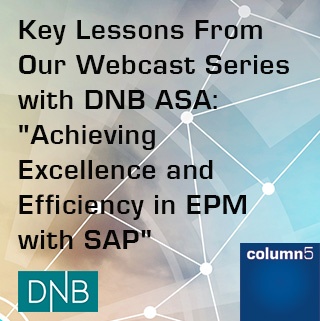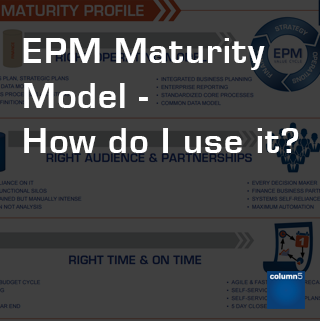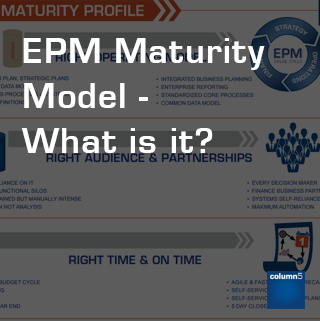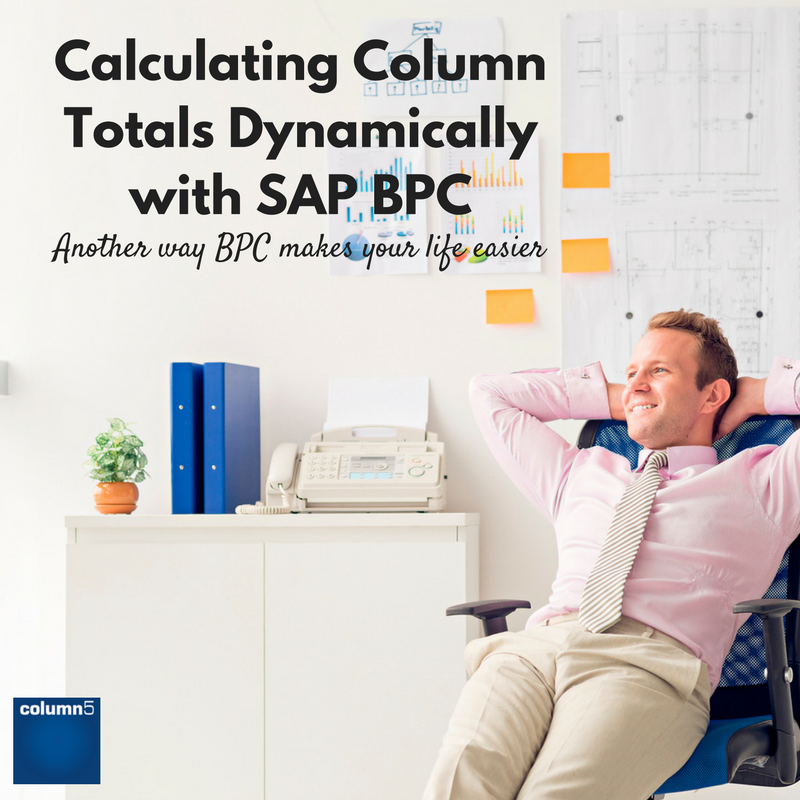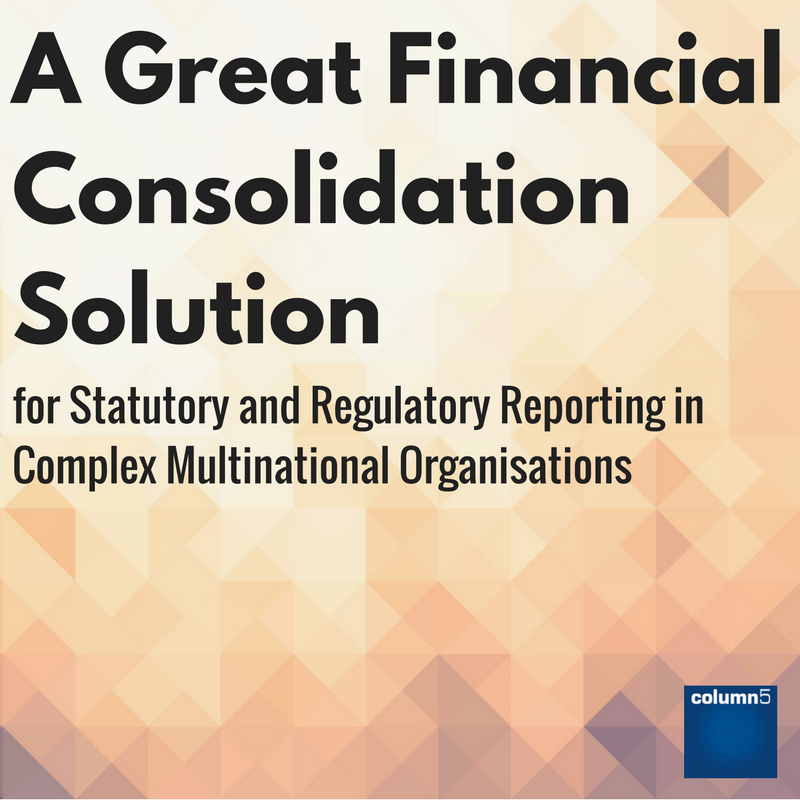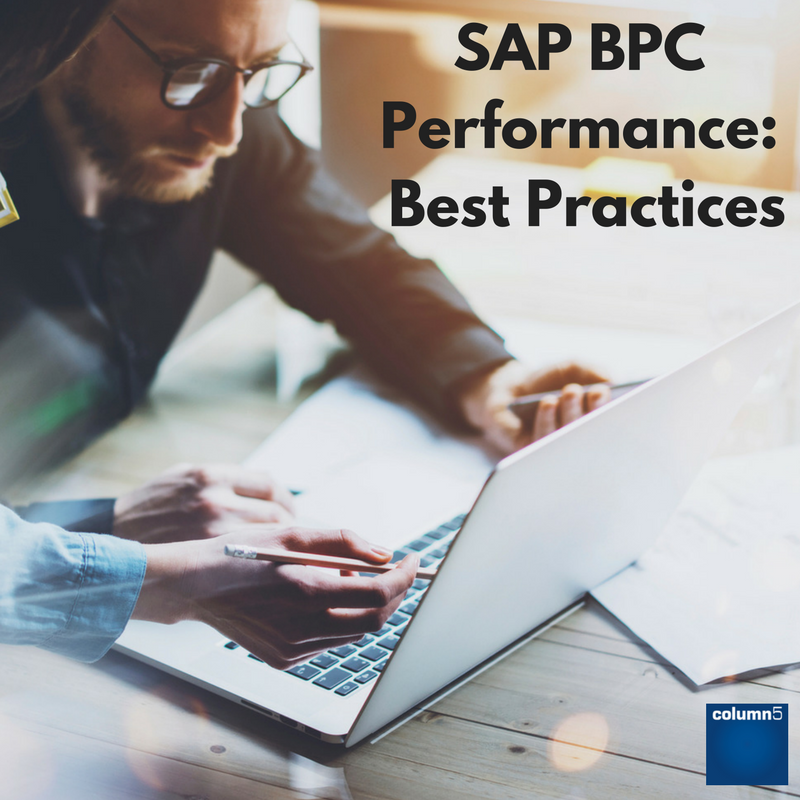How do you ensure your Enterprise Performance Management (EPM), Business Planning & Consolidation (BPC) or Business Intelligence (BI) project will start out positioned for success? You've gone through the RFP process, completed the vendor evaluation, and have decided on the technology. But before diving into requirements and design, you also need to spend time in the project initiation phase--ensuring the project's critical success factors (CSFs) are defined and socialized, and that a plan for implementation is developed. Be sure there is a common understanding of the importance of the CSFs and how they differ from project objectives and success criteria.

SAP Analytics
Thought Leadership
The Top 5 Critical Success Factors for Your EPM Project
Topics: Best Practices, Enterprise Performance Management (EPM), Project Management, Performance, BPC (Business Planning & Consolidation)
The Top 5 Things to Consider When Selecting a Consulting Partner
As with most specialized software programs, it is usually not suggested to implement SAP BPC without the assistance of a consulting partner. Many projects require expertise that most EPM administrators do not have, and so it is recommended to find a partner that can ensure success. Choosing this partner is an important decision. Here are a few of the top things a company should look at when deciding on an appropriate organization.
Topics: Best Practices, Thought Leadership, Enterprise Performance Management (EPM), Project Management, Training, Implementation, BPC (Business Planning & Consolidation)
We have all overcome mistakes in life, using the rearview mirror to observe how easy it would have been to sidestep the pitfall, commenting, “If only I knew then what I know now.” This thought crosses my mind almost daily.
What do you do when you feel this way about the EPM process, BPC or your consultants? Do you ever wonder how they became experts, or how qualified they truly are? How do they define best practice? Recently, I worked with a customer who started their BPC journey with an early version of BPC for NetWeaver. They sought out highly talented consultants, assuming their talent and experience based on their reputation within the industry.
Topics: Best Practices, Thought Leadership, Enterprise Performance Management (EPM), Implementation, Services Focused, Executive
Key Lessons From Our Webcast Series with DNB ASA: "Achieving Excellence and Efficiency in EPM with SAP"
During November and December, Column5, in conjunction with our client DNB, three interesting and informative webcasts ran on the exciting and rewarding journey taken by DNB ASA, Norway’s largest financial services group.
This series of webcasts focused on the following specific and important elements of Enterprise Performance Management:
- Financial Consolidation for Statutory and Regulatory Reporting
- Intercompany Reconciliation
- The Last Mile of Financial Reporting
Each topic was underpinned by informing the attendees how SAP EPM solutions help companies achieve excellence and efficiency based on this real life DNB example.
Topics: Best Practices, Case Study, sap, EPM, webcast
In the last article we looked at the definition and content of the EPM Maturity Model.
In this article we’ll look at how to gauge EPM Maturity and how to identify areas to improve. At the core of the Maturity Model is the definition of:
- Right Model
- Right Audience
- Right Time
Across these definitions we lay a scale that moves from low levels of maturity to high levels of maturity:
Topics: Best Practices, Process Improvement, Thought Leadership, Enterprise Performance Management (EPM)
Organizations need to plan, measure and manage across Strategy, Operations and Finance. Isn’t that what Enterprise Performance Management (EPM) is all about? It seems like a simple formula. But what about if we change the question to ask what makes successful EPM and successful organizations? If we start with the definition that “Successful EPM drives organizations that dramatically outperform their competitors in terms of both financial and non-financial results” – this gives a very different perspective on the importance and value of EPM. It also means that you need to have a mechanism and framework to objectively review your EPM capabilities and relative maturity.
Topics: Best Practices, Thought Leadership, Enterprise Performance Management (EPM)
How to be a BPC Capital Planning Jedi Master - from Darwin EPM
At Column5 we always advocate the approach to EPM that yields the highest value returned to our clients and EPM users in general. One emerging best practice in EPM is adopting packaged content in lieu of custom developed solutions for your EPM functionality. The advantages are legion: faster time to value, more robust functionality, enhanced performance, improved supportability, lower project cost and total cost of ownership over time. Packaged content is most applicable when facing standard requirements that are consistent across customers.
Topics: Best Practices, BPC, Capital planning
Calculating Column Totals Dynamically - SAP BPC
Need to calculate a grand total dynamically? Shifting of Local Members giving you a headache? I previously used Indirect() functions, but I discovered with larger reports this put a drag on reporting performance. To sum from the first report column to the last report column I was using something like this =SUM(EPMPOSITION(1):INDIRECT(ADDRESS(ROW(),COLUMN()-1))), which is not considered best practice but I got results!
The SAP definition: “EPMALLMEMBERS is used to perform a calculation (such as sum or average) on all the members displayed in a row or column axis, whether the axis contains one or several dimensions”
HOW? Here are some examples:
Topics: Best Practices, Excel, Training, Performance
A Great Financial Consolidation Solution for Statutory and Regulatory Reporting in Complex Multinational Organisations
SAP has a portfolio of Consolidation solutions with their own unique positioning and the SAP Financial Consolidation (FC) software is an enterprise solution offered to companies looking to improve and speed up their financial close – without sacrificing quality control and compliance.
FC became part of the SAP EPM portfolio through the acquisition of BusinessObjects in 2007. BusinessObjects itself acquired the French software vendor Cartesis who originally marketed Financial Consolidation as Cartesis Magnitude. With a large and loyal customer base throughout Europe and Japan, FC has a particularly strong focus on statutory consolidation requirements within large multinational organisations that have complex and evolving corporate structures across multiple reporting standards (e.g. IFRS and local GAAP).
Topics: Best Practices, Analytics, Consolidation, Financial Close, Value
Column5 and I have seen a lot of things over the years in the EPM space. I have been working on the technical side of BPC MS since 2000, BPC NW since 2007, and BPC NW on HANA since 2012, having implemented it around the world over 1000 times.
I have a dream to, at some point, write a book of everything I have seen over the years. If investors knew what was really going on deep within some of the world’s datacenters, I think some heads would be rolling! I won’t mention ANY NAMEs but some of them are the who’s who of worldwide companies!
I keep running into the same thing over and over and over again, whether it is hosted by a 3rd party or implemented on-site at a client. The challenges start with a common element that is surprisingly easy to fix: No one seems to take care of the servers and technology!
Topics: Best Practices, Performance, BPC (Business Planning & Consolidation)
Subscribe
Recent Posts
Posts by Topic
- Enterprise Performance Management (EPM) (93)
- BPC (Business Planning & Consolidation) (75)
- Best Practices (51)
- Performance (49)
- Thought Leadership (47)
- Implementation (35)
- Process Improvement (27)
- Training (25)
- Value (25)
- EPM (19)
- Project Management (19)
- Data (16)
- Excel (16)
- BPC (15)
- Roadmap (14)
- sap bpc (14)
- User Experience (12)
- Analytics (11)
- EPM ROI (11)
- Center of Excellence (10)
- Financial Information Management (10)
- Microsoft (10)
- Business Intelligence (BI) (8)
- Cloud (8)
- EPM 10 (8)
- Forecasting (8)
- HANA (8)
- best practices for epm (8)
- Darwin EPM (6)
- Innovation (6)
- NetWeaver (6)
- Technical (6)
- best (6)
- EPM Maturity (5)
- Financial Close (5)
- sap (5)
- BPC11 (4)
- Consolidation (4)
- EPM Add-in (4)
- Executive (4)
- Product Focused (4)
- SO - BPC v10.x (4)
- SO - BPC v11.x (4)
- epm summit (4)
- technology (4)
- xp&a (4)
- Analysis Office (3)
- BPC NW – Embedded (3)
- BPC logic (3)
- BPC planning Master Data and Data Structure (3)
- BPCv10 embedded (3)
- Case Study (3)
- EPM Roadmap (3)
- Extended Planning & Analysis (xP&A) (3)
- OutlookSoft (3)
- SAC (3)
- group reporting (3)
- reporting (3)
- #EPMInnovation (2)
- AISuccess (2)
- API (2)
- Analytics Cloud (2)
- BPC 11, Version for BW/4HANA (2)
- DarCE (2)
- EPM Landscape (2)
- Epm Academy (2)
- FUTURE OF SAP BPC (2)
- Functional (2)
- Performance Tuning (2)
- SAP Analytics Cloud (2)
- SAP HANA (2)
- SO - BPC v7.x (2)
- SO - Functional Track (2)
- SaaS (2)
- Services Focused (2)
- Upgrade (2)
- analytics tune up (2)
- tuneup (2)
- Analysis plug-in v2.7 for Office (1)
- BFC (1)
- BPC Alternatives (1)
- BPC Lifeline (1)
- BPC PLUG-INS (1)
- BPC v10 upgrade (1)
- BW (1)
- CPM (1)
- Capital planning (1)
- EPM & Analysis plug-ins (1)
- EPM Investment (1)
- EPM events (1)
- Embedded (1)
- Extended Support for SAP BPC (1)
- Investment Comparisons (1)
- Rapid Deployment Systems (1)
- SAP BFC Migration (1)
- SAP BPC Technical Issues (1)
- SAP EPM Add-in Crashing (1)
- SAP EPM Add-in Performance (1)
- SO - Executive Track (1)
- SO - Platform - Microsoft (1)
- SO - Technical Track (1)
- VB (1)
- webcast (1)
3 S T E P S
To Enhance Your EPM Performance:
1.Get Your Ultimate Guide to Improving SAP EPM Performance
Learn what could be contributing to your poor performance and how to diagnose common problems. Get tips that will empower you and your team to improve the performance of your system in order to get the most out of your SAP EPM Investment.
2. Test Your BPC Performance
Get a BPC performance report card and custom report to identify performance issues you may not even know you have.
3. Get Your EPM Assessment
Our assessment delivers a complete, best practice roadmap for you to follow. We’ll work together to assess what you need to pivot your financial forecasting, planning, reporting and analysis to handle the compressed requirements from the volatile COVID-19 environment.






